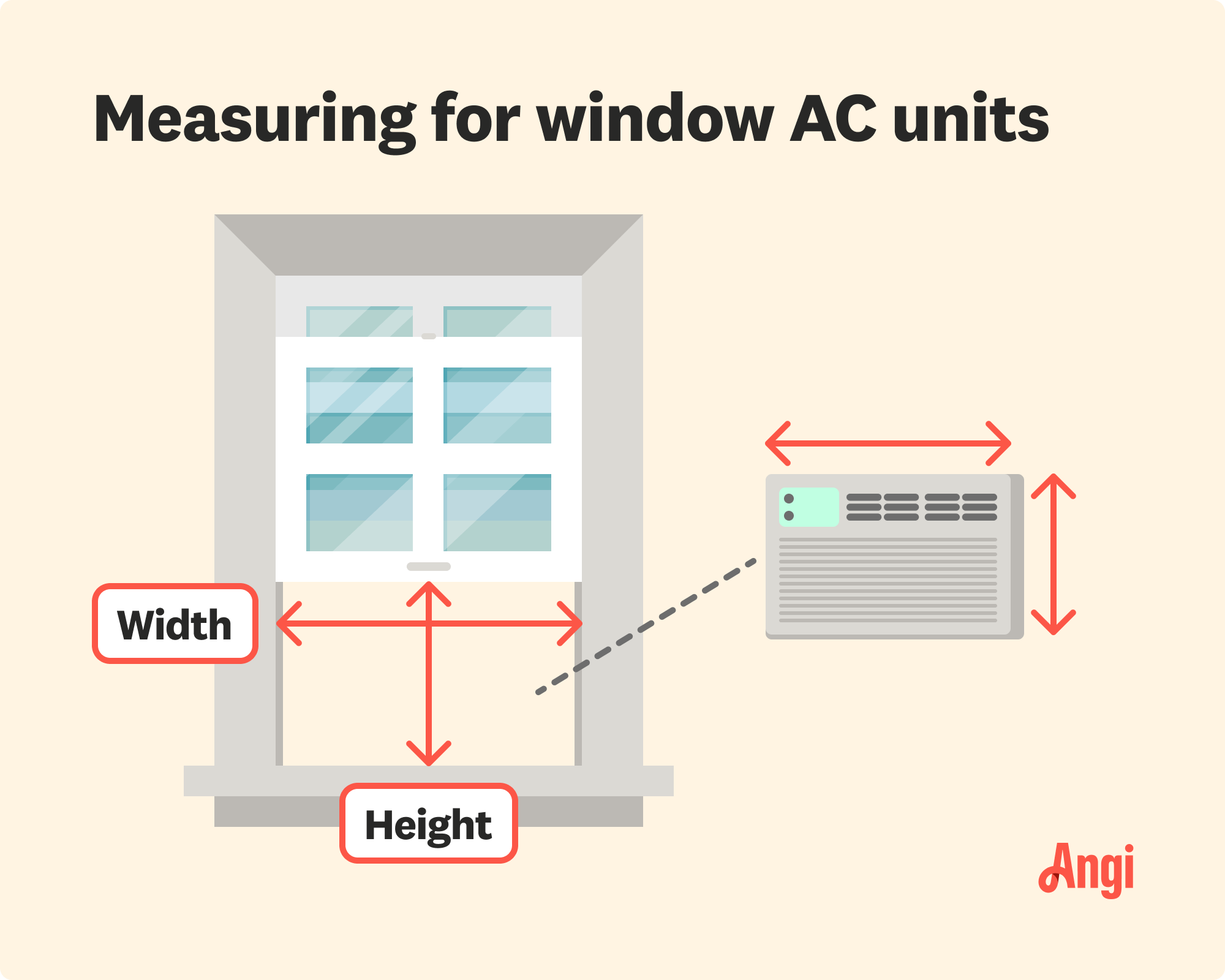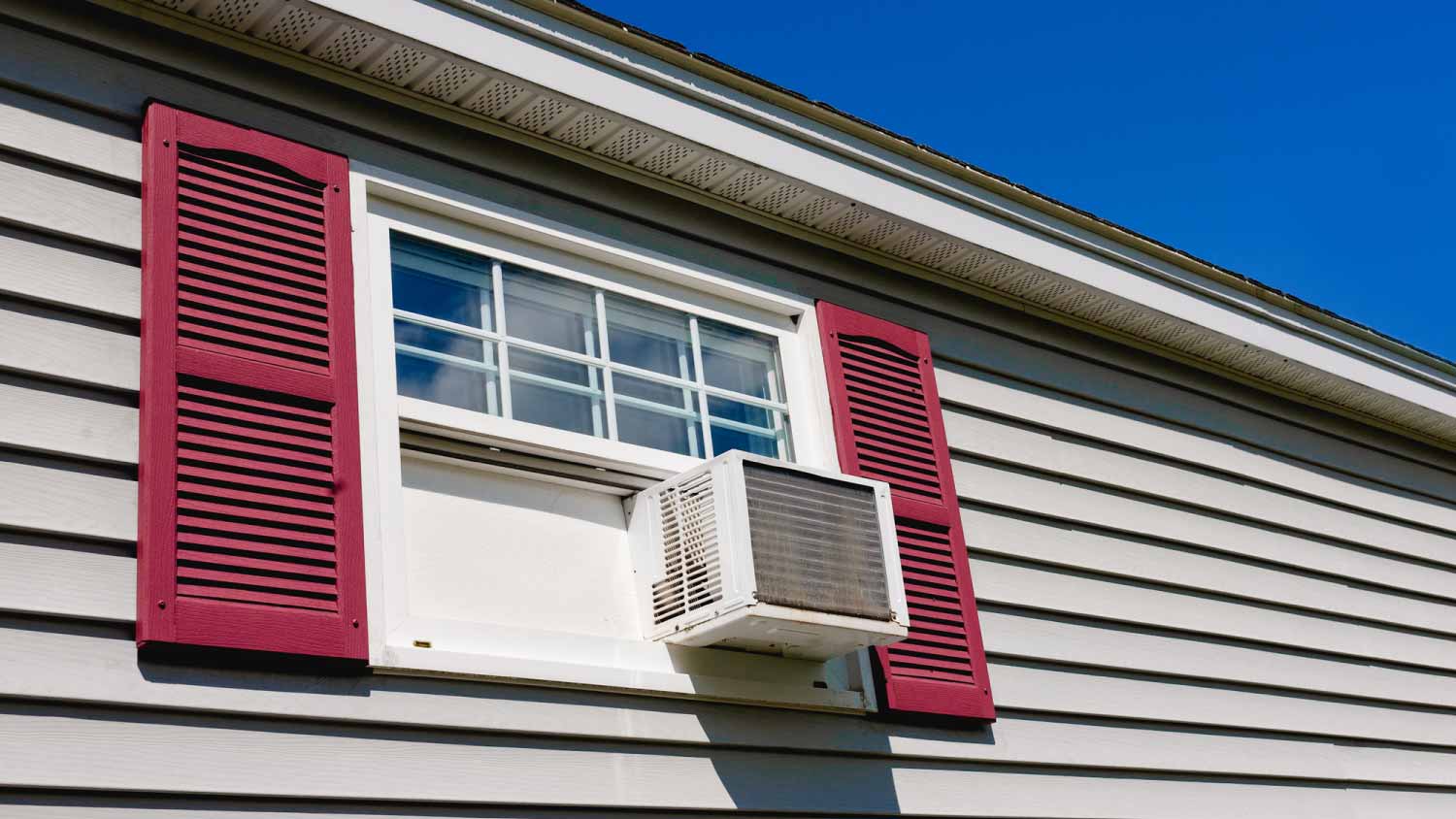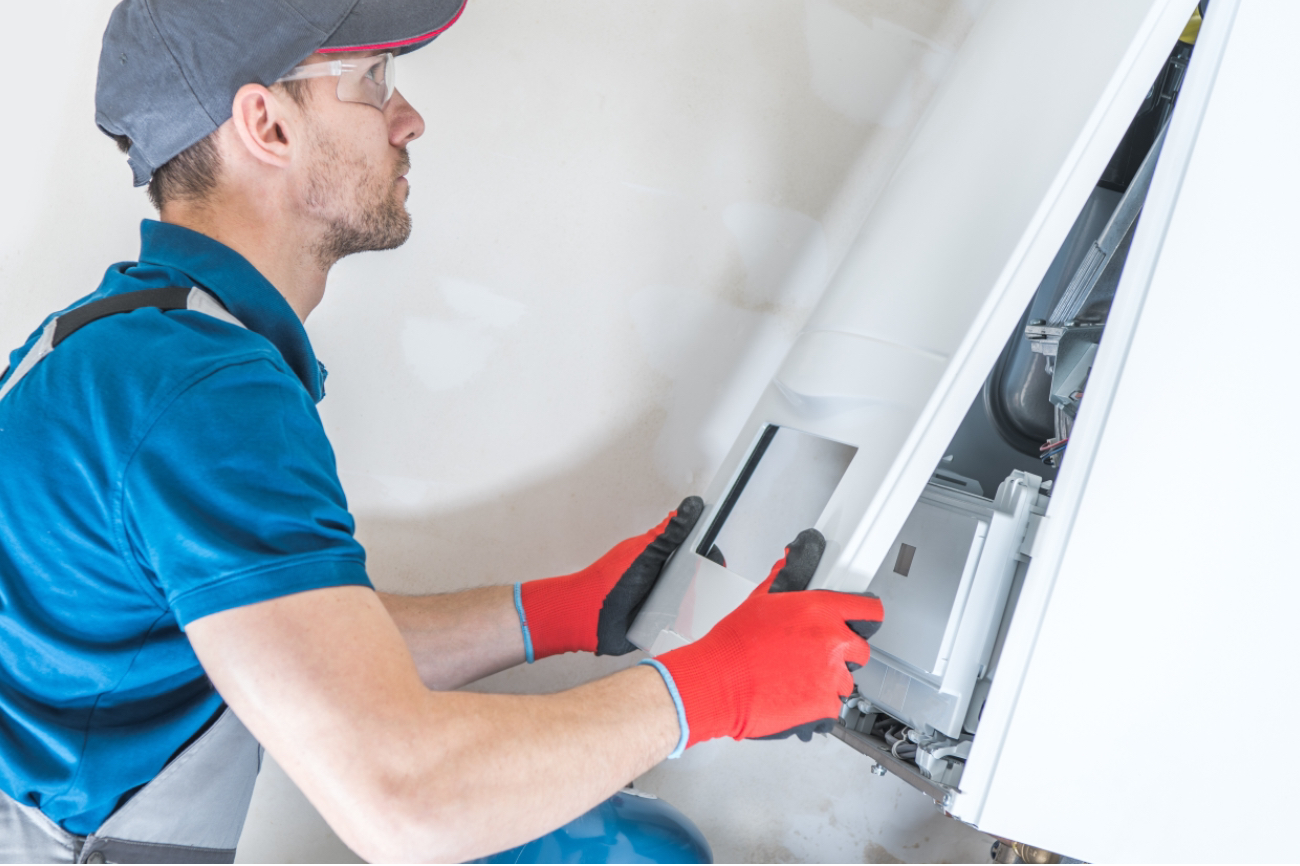
Explore how much an AC compressor costs to install based on cost factors like it’s type, brand, size, and local labor rates.
Make sure your unit measures up


The right window air conditioner size depends on the size of the space you’re cooling, and you need at least 20 BTUs for every square foot of space.
Window ACs are measured by both their dimensions and BTUs. For example, a window AC that’s 14 to 28 inches wide will have 5,000 to 10,000 BTUs
If you’re measuring for a new window AC, you need to measure the window opening from the innermost sides.
If central AC is too much but you need some relief from the rising summer temperatures, a window AC might be a good solution. But with so many window AC sizes to choose from, which one will work best in your home? You’ll want to choose an AC that not only fits the window but also one that’s powerful enough to cool the entire room. Here’s what you need to know to pick the right window air conditioner size for your space.
Window AC units range in size depending on their cooling capacity, which is measured by British thermal units, or BTUs. If all these numbers and acronyms are confusing, an HVAC pro would be happy to help out by visiting your home and giving you guidance on the window air conditioner size you need.
The smallest window AC unit width is around 14 inches, and you’ll be able to purchase one with a cooling capacity of 5,000 to 10,000 BTUs. The largest width for a window AC unit is around 28 inches. As this is double the size of the minimum, you can expect more power, as well—around 35,000 BTUs.
The shortest window ACs are around 7 inches in height and often offer 5,000 BTUs of cooling capacity. The maximum height is around 27 inches, which is the size of the most powerful ACs featuring 25,000 to 35,000 BTUs.
The depth of a window AC unit is also important. After all, you’ll be installing the AC unit partially outside of the window, so you’ll want to ensure clearance for safety. Some AC units are as slim as 12 inches in depth. These are the less powerful units in the 5,000 to 8,000 BTU range. However, if you’re looking for the most powerful units in the highest range of 23,000 to 35,000 BTUs, you can expect a maximum depth of 36 inches.
| Dimensions | BTUs |
|---|---|
| 14 to 28 in. wide | 5K to 10K |
| 7 to 27 in. tall | 5K to 25–35K |
| 12 to 36 in. deep | 5–8K to 23–35K |
You need at least 20 BTUs to cool each square foot of space. Keep in mind that you may need multiple AC units if you’re trying to cool an entire home with an open floor plan.
| Room Size (Square Feet) | BTUs Needed |
|---|---|
| 100–250 | 5,000–7,500 |
| 250–400 | 7,500–10,000 |
| 400–550 | 10,000–14,000 |
| 550–750 | 14,000–20,000 |
| 750+ | 20,000+ |

Measuring for the right size window AC isn’t difficult, but you’ll want to do it carefully for a secure installation.
Use a tape measure to calculate the length and height of an open window where the AC unit will go. When you’re measuring, use the innermost sides of the opening for both length and width. There must be enough room to accommodate the unit, though know that you can lower the sash and spread the accordion to secure the unit.

You might think that dimensions are the only things you have to worry about when it comes to installing a window AC unit. While a secure installation is important for obvious reasons, you’ll also want to ensure you’re choosing a unit with an appropriate number of BTUs for the space. Consider room size, appliance features, and energy savings when choosing the right size AC to cool your space.
Use the 20 BTUs per square foot guidelines to determine how much cooling power you’ll need for the space. Then, shop appliances accordingly, keeping in mind your window’s dimensions.
Window AC units have variable features, but make sure you can access them if you have a higher window installation. Many newer AC units come with remotes to make turning on and off the unit and adjusting the settings much easier.
Look for the Energy Star logo on appliances, which certifies the appliance’s energy efficiency. This is good news for saving both money and energy.
When your window AC unit is too small for your space, it won’t offer the power you need. Not only is that bad news for when you’re trying to stay cool indoors on a hot day, but it’s even worse news for your wallet because you’ll be paying high energy costs to keep your AC on constantly.
While an AC with a larger cooling capacity would be better, getting one that’s too big isn’t the solution, either. According to Energy Star, choosing an AC that’s too powerful for your space is actually less effective. Here’s why: Aside from cooling your space, an AC is supposed to remove humidity. When an AC is too big, it will cool off the space faster but leave behind the humidity. The result? Interiors that feel cold and clammy rather than cool and dry.
If your space feels damp and cold when you run your window AC, it’s time to call your local AC repair pro to troubleshoot. Perhaps there’s something malfunctioning with the appliance itself, in which case an experienced pro can get it back on track with a quick repair. But if the window AC unit is operating the way it should, it could be that its cooling capacity isn’t the right fit for your space. An HVAC pro can also help you figure out whether it’s time to add a larger window AC unit or upgrade to a powerful yet more energy-efficient mini-split unit for your home.
From average costs to expert advice, get all the answers you need to get your job done.

Explore how much an AC compressor costs to install based on cost factors like it’s type, brand, size, and local labor rates.

Average costs of HVAC inspections vary based on house size, location, and type of HVAC system. Follow our easy guide to gauge your home’s HVAC inspection cost.

Considering a heat pump to reduce monthly heating and cooling bills? Find out geothermal heat pump costs based on system type, capacity, and other factors.

Discover heat exchanger replacement costs to learn about price factors, labor, and ways to save before hiring a pro or starting your project.

Not sure which kind of thermostat is best for your home? Here’s an overview of three types of thermostats so that you can choose the right one for you.

Discover the benefits of a DIY outdoor wood furnace forced-air system. Cut costs, reduce fire risk, and embrace renewable heat for your home.